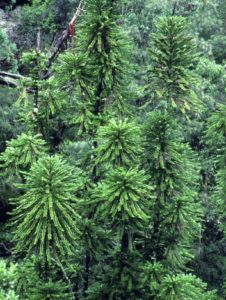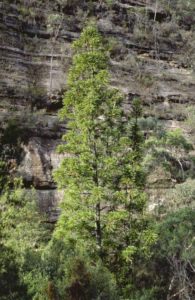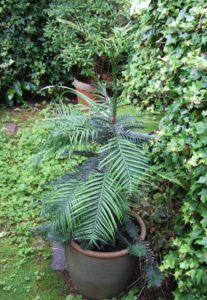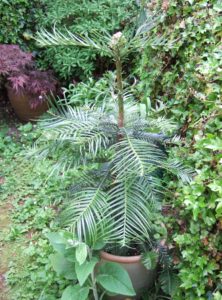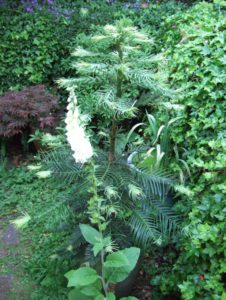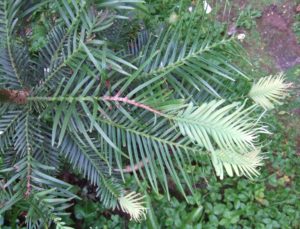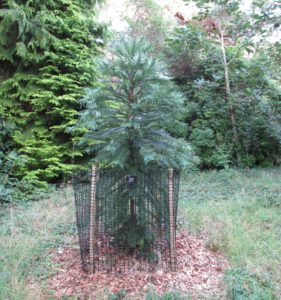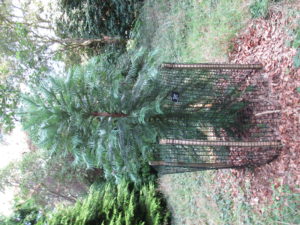Stories of scientific discoveries always pique my interest, especially when they are the discovery of a species or genus like the coelacanth, thought long-extinct. The Wollemi pine (Wollemia nobilis) is one such discovery. This wonderful tree has only been known to science as a living specimen for 22 years: it was discovered in Australia in 1994 by a field officer with the National Parks and Wildlife Service (New South Wales), David Noble, in an isolated steep-sided gorge in the Blue Mountains. He was familiar enough with the flora of the area to realise that the tree in front of him was unlike any he had seen before. Scientists soon established it was a member of the family Araucariaceae, the same family as the monkey puzzle tree (Araucaria araucana), and had previously been known only from fossil specimens. The new species was named after its discoverer.
Fewer than 100 trees exist in the wild, and the population was clearly very endangered, and so a programme to increase specimen numbers was quickly put in place. Seeds were collected (via a brave volunteer dangling below a helicopter), and cuttings were taken. To try to protect the species, cuttings were distributed to botanic gardens around the world. A nursery in Cornwall was licensed to propagate the cuttings in the UK – Kernock Park Plants. We were very kindly given a plant by Dick Harnett, the proprietor of the nursery.
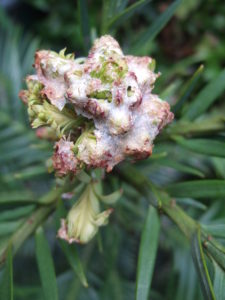
Close up of the waxy cap that protects the growing bud over winter; the newly sprouting leaves are pushing it off. May 2010.
Dick told us that the trees can grow quite happily in pots, but after a year or so the tree was putting on so much growth and I couldn’t bring myself to prune it to keep it in a suitable size for the pot. So I contacted Dr Wolfgang Bopp, the curator of the Sir Harold Hillier Gardens and Arboretum near Romsey in Hampshire, to see if the Arboretum would be interested in the donation of the tree. They already had two specimens, but given the rarity of the plant he was happy to accept it.
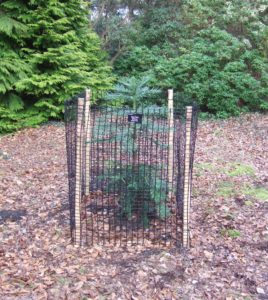
March 2011. Specimen 2010.0344 A at its new home in the Harold Hillier Gardens and Arboretum, near Romsey in Hampshire.
We went to visit the Gardens and ‘our’ Wollemi pine over the weekend, and it is doing really well.
